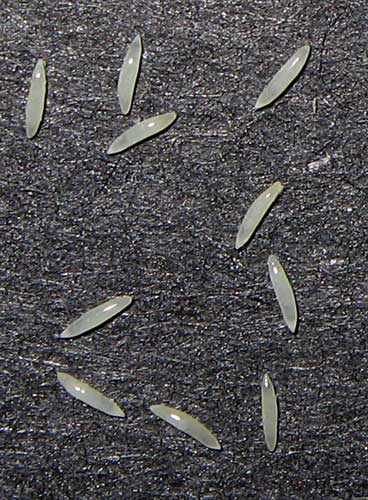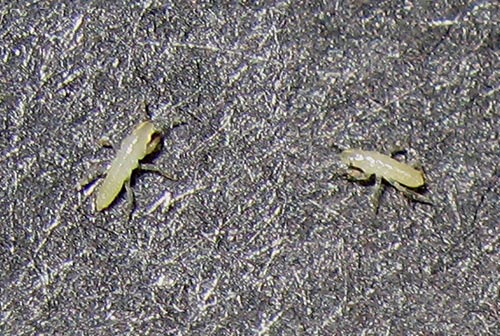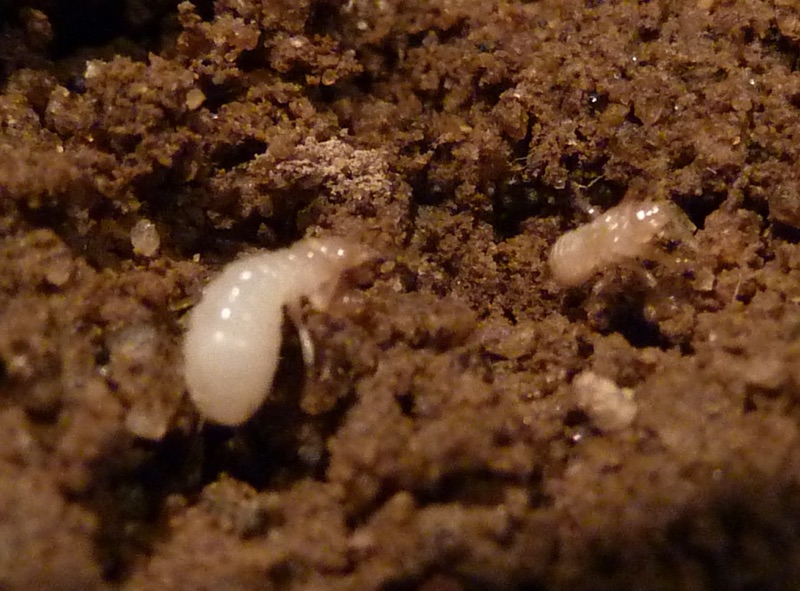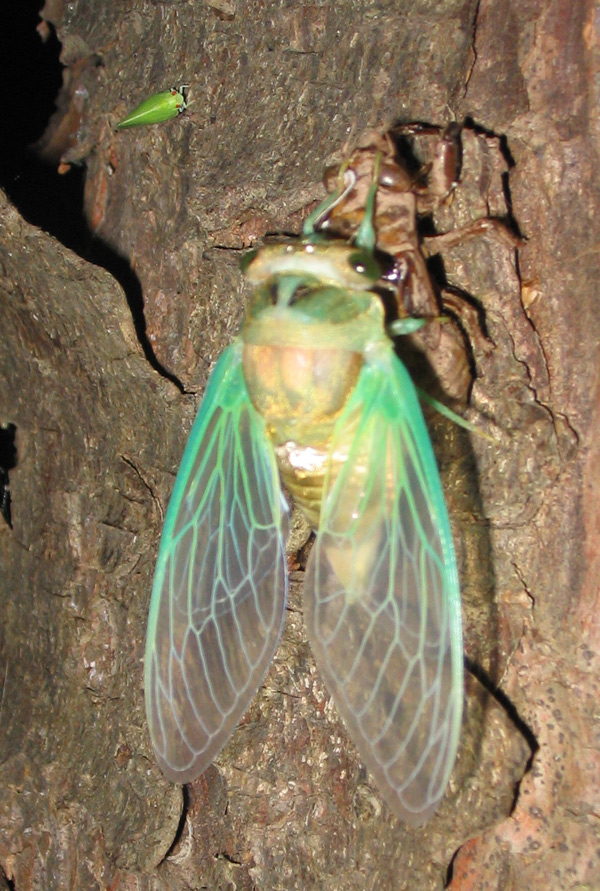Somebody kick me if I’m wrong, but, I’m pretty sure it’s now the start of cicada season in Australia.
Author: Dan
I came across this article thanks to Google’s news alerts: UC Engineering Researchers Find Mercury In Cicadas. I’ve never eaten a cicada and I don’t plan on doing so in the future, but a lot of “cicada maniacs” do, so here’s your PSA.
Think twice before you eat one of Cincinnati’s Brood-X cicadas. That’s the warning from researchers at the University of Cincinnati College of Engineering, who have found surprising levels of mercury in these insects.

We have three new galleries:
NEW! Gina Scarborough’s Florida Cicada. 18 great pictures of a pink cicada. We need help identifying this cicada, so let us know if you have a clue what it is.
NEW! Giant pictures of Bill Lesar’s Tibicen dorsatus. You’ve seen this cicada in an earlier post — now you can see huge versions of Bill’s photographs.
NEW! Andrea’s 2005 Cicada Nymph Exoskeleton Gallery. Three big pictures of discarded exoskeletons.
 Way back in July a man by the name of Samuel Orr mailed me a DVD trailer of a film he had a part in making called Return of the 17-Year Cicadas. At the time my reaction was “I am simply blown away by its excellence. That might be the best cicada video I’ve seen so far”. Somehow I let it slip through the cracks and I forgot to write about it. In the mean time the movie has won first prize in the Non-Interactive Media category of the 2005 Science & Engineering Visualization Challenge. I’m sure once the film reaches a wider audience — perhaps PBS or the Animal Planet channel (hint! hint!) — it will win more awards.
Way back in July a man by the name of Samuel Orr mailed me a DVD trailer of a film he had a part in making called Return of the 17-Year Cicadas. At the time my reaction was “I am simply blown away by its excellence. That might be the best cicada video I’ve seen so far”. Somehow I let it slip through the cracks and I forgot to write about it. In the mean time the movie has won first prize in the Non-Interactive Media category of the 2005 Science & Engineering Visualization Challenge. I’m sure once the film reaches a wider audience — perhaps PBS or the Animal Planet channel (hint! hint!) — it will win more awards.
Read all about the new, award winning cicada documentary Return of the 17-Year Cicadas on the excellent EurekAlert! Science Reporting Alert website. Make sure you download and watch the video too. It is incredible.
Thanks to Roy and Dona for reminding me to post something about this film.
So, what do cicada larvae look like? Technically they’re called nymphs, not larvae. When cicadas progress from one stage of development to another, they molt, rather than pupate. Each stage of development is called an instar. Most, if not all, cicadas go through five instars. The adult phase is the fifth instar.
First, here’s what their eggs look like:

Photo by Roy Troutman.
When the eggs hatch, the cicadas don’t look like a grub or maggot as you might expect; instead they look like tiny termites or ants, with 6 legs and antennae. At this point, they’re called first instar nymphs.
Here are some first instar cicadas:

Photo by Roy Troutman.
Here is a first and second instar cicada in the soil:

Photo by Elias Bonaros.
Here is a first, second, third, and fourth instar:

Photo courtesy of Chris Simon.
If you are interested in participating in cicada nymph research, visit The Simon Lab Nymph Tracking Project page for more information. You must have had periodical cicadas on your property in the past 13 or 17 years to find the nymphs — not including the Brood II area since those nymphs came out of the ground this year.
 Bill from Lincoln, Nebraska sent us this awesome photo of a cicada. I’ve never seen a cicada quite like this one. It’s as pretty as a butterfly. My guess is it belongs to the genus Diceroprocta, but I don’t know what species it is. Anyone know? If so, leave your guess in the comments section below.
Bill from Lincoln, Nebraska sent us this awesome photo of a cicada. I’ve never seen a cicada quite like this one. It’s as pretty as a butterfly. My guess is it belongs to the genus Diceroprocta, but I don’t know what species it is. Anyone know? If so, leave your guess in the comments section below.
Tim McNary wrote:
The cicada you pictured is either Tibicen dealbatus or Tibicen dorsatus. It’s kind of hard to tell from a picture. If you found it in trees in town, it is probably T. dealbatus. If you found in grassy sandhills and the pronotum in swollen in profile it is probably T. dorsatus. The characture that Davis uses, the shape of the uncus, is actually unreliable.
David and Gerry said it was a Tibicen dorsatus (formerly T. dorsata).
A Cicada Poem from David Granville
Cicada Songs (for “Cicada Mania”)
They say your songs
portend the end of summer
just as chirping robins
usher in the spring air.
Listen to the sound
whirring, buzzing through
leaves of trees that shelter
the thrumming brood.
Insect monks chant
hymns of nature
for us and for
their silent females: “mate her.”
More musical than electric currents
that hum along power lines,
your symphony hovers,
guarding the sultry night like armored palatines.
Constant and pervasive,
we humans sometimes hear
sometimes ban your frequencies,
lulled to sleep by drums so dear.
Air conditioners and headphones
drown out your beautiful noise
but others sing with you
till Fall’s frost steals these little joys.
-DFG
In October 2005 the 6th International Film Festival of Insects (FIFI) will be held in Prades France.
From the FIFI homepage:
Since 1995, OPIE-LR (Office for the Insects and their Environment in Languedoc-Roussillon) has organized the International Festival of Film on Insects every two years.
This 6th biennial event will take place from 5th to 9th October 2005 in Prades (Pyrénées Orientales) in southern France.
FIFI is a cultural, educational, scientific and convivial feast with an international dimension. This year it occurs in a unique natural site: Canigou mountain, which has 7 Nature Reserves and the Regional Natural Park of Pyrénées Catalanes
Someone asked how loud Neotibicens were in terms of decibels. According to the University of Florida Book of Insect Records the Tibicen resh has a maximum sound pressure level of 107.2db, and the Tibicen pronotalis has a max SPL of 108.9db. Other species of Tibicen seem to max out around 80-100db.
Bonus unrelated link:
A French Canadian Tibicen page (thanks Roy).
A cicada and an leafhopper

Here’s a cute image for you: a cicada and its cousin, the leafhopper, in the same picture. If you look closely, you’ll see they look alike. Cicadas and leafhoppers belong to the same superfamily called Cicadoidea. Cicadas belong to the family Cicadidae, and leafhoppers belong to the family Cicadellidae.